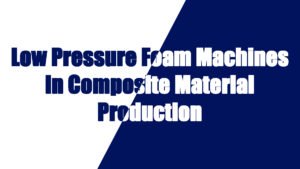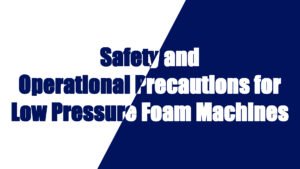With the growth of global industrial and consumer goods demand, Polyurethane Integral Skin Foam (ISF) has become an indispensable material in various fields. From automotive manufacturing to furniture, healthcare to consumer products, ISF has gained favor in industries due to its unique performance advantages. According to market research, the ISF market is expected to experience steady growth between 2025 and 2035, with an increasing market size and diversification of its applications driving its widespread use.
Key Advantages and Applications of ISF
Polyurethane Integral Skin Foam (ISF) features high durability, lightweight, excellent weather resistance, and outstanding comfort, making it ideal for applications in demanding environments. Its most prominent feature is a hard exterior and soft interior, making ISF suitable for products that require strong external protection combined with internal softness and comfort.
- Automotive Industry
ISF materials in the automotive sector are primarily used in seat cushions, dashboards, armrests, and door linings. In-car environments require materials that offer both comfort and safety, and ISF meets this dual need. With the rise of electric and eco-friendly vehicles, the demand for lightweight and high-performance materials is increasing. It is projected that by 2030, global demand for ISF in the automotive sector will reach $1.5 billion, with an annual growth rate of 4%-5%. The lightweight characteristics of ISF help reduce vehicle weight, improving fuel efficiency and reducing CO2 emissions, aligning with the future trend of green transportation. - Furniture Industry
Consumers are increasingly demanding high-quality أثاث, and the application of ISF in furniture is expanding. Particularly in office chairs, sofas, and mattresses, ISF offers excellent comfort, support, and durability, making it the material of choice for many furniture manufacturers. By 2030, demand for ISF in the furniture industry is expected to grow to $1.2 billion, with an annual growth rate of 5%-6%. As consumer expectations for product comfort, design, and durability rise, ISF’s applications in the furniture industry will continue to expand. - Healthcare Industry
With the global aging population, the demand for healthcare equipment and nursing supplies is on the rise. ISF is widely used in wheelchairs, mattresses, and medical devices in the healthcare industry. Its perfect combination of softness and external hardness provides better comfort and protection. By 2030, global demand for ISF in the healthcare sector is expected to reach $1 billion, with an annual growth rate of 5%-6%. ISF’s antimicrobial properties and ease of cleaning further expand its use in medical devices and hospital equipment. - Consumer Goods Industry
As consumer income levels rise and demand for high-quality consumer goods increases, ISF’s market application is gradually penetrating consumer goods such as home appliances, sports equipment, and luggage. ISF provides better impact resistance and aesthetics for these products. By 2030, demand for ISF in the consumer goods sector is expected to reach $800 million, with an annual growth rate of 6%-7%. The widespread application of ISF in consumer goods makes it an essential material for improving product quality and market competitiveness.
Table 1: Demand Distribution of Polyurethane Integral Skin Foam by Application Field (2025-2030)
| Application Area | Market Growth Rate (CAGR) | Key Drivers | Key Uses |
| Automotive | 4%-5% | Lightweight demand in electric and eco-friendly vehicles | Seats, dashboards, door linings, and interior parts |
| Furniture | 5%-6% | Increasing demand for high-quality and comfort | Office chairs, sofas, mattresses |
| Healthcare | 5%-6% | Aging population and growing medical device demand | Wheelchairs, hospital mattresses, surgical equipment |
| Consumer Goods | 6%-7% | Increasing consumer income and demand for quality goods | Home appliances, sports equipment, luggage |
| Other Sectors | 3%-4% | Growing demand in emerging markets | Including construction, packaging, and other industries |
Drivers and Challenges of the ISF Market
Market Drivers:
Regulatory Push for Environmental Sustainability: With increasing global environmental standards, the demand for low-carbon, eco-friendly materials is rising. ISF, as a high-performance and eco-friendly material, aligns with green production trends and helps reduce environmental impact.
Rapid Development of Electric Vehicles: The automotive sector’s demand for lightweight materials has significantly increased the need for ISF. Not only does ISF help reduce overall vehicle weight, but it also improves energy efficiency and range.
Increasing Consumer Demand for Comfort and High Quality: The furniture and healthcare industries’ growing demand for comfort, support, and aesthetics drives the widespread use of ISF in these sectors.
Market Challenges:
Fluctuations in Raw Material Prices: ISF production depends on polyurethane raw materials, and the volatility of raw material prices can put pressure on ISF production costs.
Recycling Technology Limitations: Despite ISF’s excellent physical properties and durability, its recycling technology is relatively underdeveloped. Improving its recyclability and reuse is a significant challenge.
Table 2: Projected Market Growth of Polyurethane Integral Skin Foam by Region (2025-2030)
| Region | Market Growth Rate (CAGR) | Key Market Drivers | Forecast Market Size (2025-2030) |
| North America | 4%-5% | Electric vehicle and eco-friendly vehicle demand | $1.5 billion (by 2030) |
| Europe | 5%-6% | Growth in the furniture and healthcare sectors | $1.2 billion (by 2030) |
| Asia Pacific | 7%-8% | Growth in consumer goods demand, automotive and healthcare sector expansion | $1.8 billion (by 2030) |
| Latin America | 3%-4% | Rise of the middle class and growth in home, healthcare sectors | $500 million (by 2030) |
| Middle East & Africa | 4%-5% | Infrastructure development and growing healthcare demand | $300 million (by 2030) |
Technological Innovations and Future Market
With ongoing improvements in ISF production technologies, several technological innovations are expected to shape the future of this sector:
Widespread Adoption of Green Production Processes: The use of low-VOC raw materials and recyclable polyurethanes in ISF production will help reduce environmental impact.
Application of Nanotechnology: Enhancing the strength, heat resistance, and UV stability of ISF through nanotechnology will further increase its potential applications in high-end consumer goods and automotive sectors.
Smart Manufacturing Technologies: The use of automated production lines will improve production efficiency, reduce labor costs, and ensure product quality consistency.
Polyurethane Integral Skin Foam (ISF) is a versatile and high-performance material that is increasingly used in the automotive, furniture, healthcare, and consumer goods industries. With technological advancements and growing market demand, ISF applications will continue to expand, offering great market opportunities. Over the next few years, with the development of green production processes, nanotechnology, and smart manufacturing technologies, ISF will see even greater market opportunities.
Despite challenges such as raw material price fluctuations and recycling technology limitations, the ISF market still has significant potential. Enterprises should actively address these challenges and seize opportunities brought by technological innovation to meet the evolving market demand and ensure a leading position in this competitive market.




































